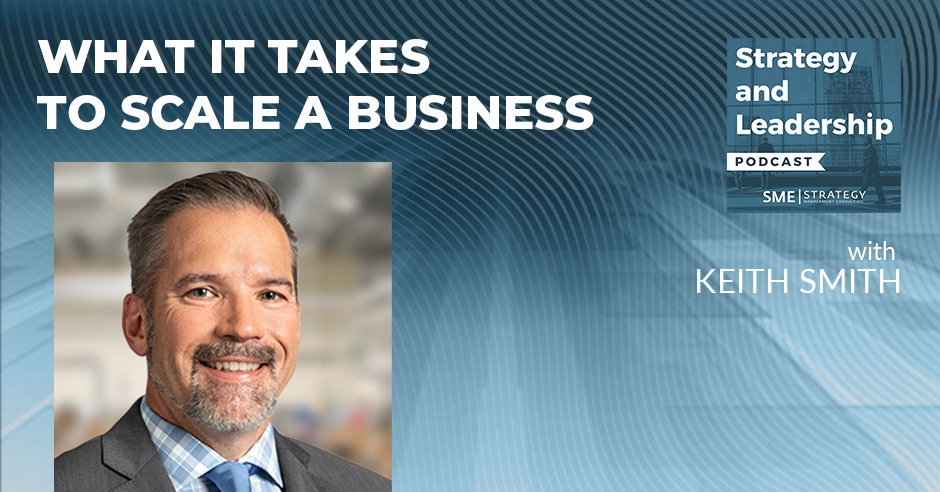
What does it take to scale a business? It’s time to dive right into this episode with Keith Smith, the president of Vonco Products, to know how he manages to climb the stairs to success. Moving onto the corporate ladder takes a lot of effort, but being intentional in his position allowed him to thrive where he is today. Vonco Products improved after many years as they added talents along the way. There is so much to unpack from this organizational growth Vonco Products faced. So don’t let this opportunity slip to acquire insights on how others scale their business.
---
Watch the episode here
Listen to the podcast here
What It Takes To Scale A Business With Keith Smith
Welcome to this episode. Before we get going on the interview, I want to shout out to my friends Affinity Group in Vancouver. They're great if you're looking to add some extra capacity to your team as you grow in 2023 and 2024. Visit them at Affinity-Group.ca/SME. Check them out and learn more about how you can leverage Canadian talent to support your organizational growth. Speaking of organizational growth, I get to chat with Keith Smith who is the President and CEO at Vonco. How's it going, Keith?
It's wonderful. Thanks for having me, Anthony.
I'm so excited. It was neat to chat about Vonco Products and what they're doing in the Midwest. I'm a Bears fan at heart. I've got a couple of clients in the Midwest there. It's interesting that a company of your scope can build a big niche without necessarily making front-page headlines. Looking at the work that you've done in previous companies and what you're doing now, it looks like you've built something great. Why don't you tell our audiences a little bit about you and Vonco Products, and then we will get into the interview?
I'll start with Vonco Products. It was founded in 1955. It's a machine-building company welding plastics and selling machines to providers of plastic products. In the '70s, the son-in-law started the company and said, "Let's start selling the consumables instead of the machines." It was choppy sales. It was a family-run business for almost 60 years. I found it, and I had a desire to get into the business myself after 25 years of working for somebody else in a pretty good career moving up the ladder but at the same time, I had a desire to make a bigger difference for the world than what I was doing.
I bought Vonco in 2013 from the family. It was a job shop mentality. We have transformed it into a medical device contract manufacturer and consumer packaging company over ten years. We have done that through a series of executing the strategy, organic growth, sales processes, and improvement in the operations and technology. The second leg is innovating. We have launched some tremendous products as well as acquired. I'm sitting in our latest acquisition in Fortville, Indiana. There are four facilities now. We have grown through those three legs of execution, innovation, and acquisition.
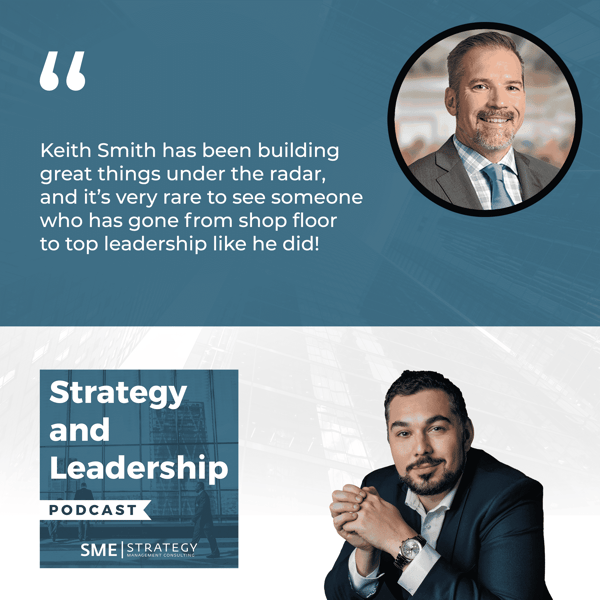
I started in this industry coincidentally right out of high school. I was a printer. We would make a lot of single-use medical device products and packaging that helps get products into the market safely. Part of that process is printing. I started printing right out of high school and was earning money to go to college. I've been here now for almost 30 years. I own my company now because of it. Right off the production floor, I worked my way up through it to the point where I wanted to make a difference in both ways, create value for the world, and intersect that with the opportunity to fulfill my team's and the entire organization's hopes and dreams. That intersection is what fuels me as an owner and entrepreneur.
I get the privilege of getting to interview great CEOs like you that have gone through that journey but it's rare in my experience to see somebody go from the shop floor up. You hear about it but it doesn't happen so much. There is a lot to learn. I bet that you take that approach or mentality of seeing all of it, being the guy at the bottom, and then incorporating that. I can hear it in your voice. You're watching out for everybody in the company because you've been there and done that.
I'm sure we will talk more about that but here's what I want to ask you. What's that transition like from being a GM Director of Operations in your previous role to an owner-president? You're working for somebody versus working for yourself. Has there been a mentality shift? Has it been the same except that you've got more at stake? It has been years now but tell me how that transition has gone.
I've got some great stories. I spent a lot of time working off that corporate ladder. I moved myself to the general manager of a $500 million division of apples and papers. It was a tremendous company that gave me a lot of experience and opportunity. Hopefully, they were happy with what I provided as well. I also had a desire to go into business on my own and had a passion. It has been a dream of mine since I was in high school to run my business. It wasn't necessarily business. For whatever reason, there was something in me that wanted to do this. Finally, I got the opportunity.
The whole company was a billion-dollar company. As you can imagine, you've got big staffs when you get to about $1 billion. There's a big team that I'm working with almost over 1,000 people conducting business for this division that I was running. I bought a company that I could afford to be part of. We're talking about 60 people. It was family-run for about 60 years. There was a different mentality in that situation. That first week, I've got two partners. I made a call and said, "What a transition this is because the processes, the procedures, the condition of the operation, and the way that we react and respond are completely different."
My partners talked about it, "We all made this investment. Keith is going to run this thing. We're all going to benefit from him running it. He called. He's going to walk out on me because it's that big of a transition." I was a bit under-prepared for what that was going to look like to be fair but it didn't change my mindset. We needed to restructure this so we could be doing business with the top medical device companies and top consumer product companies as we do now. I buckled down after that first week and put together a strong plan, and we started the march to do that.
I don't know if I was intentional and deliberate but I've always rolled this way, and I put words to the way things happen. What is your next step? You have a vision to get here at the end. Leaders can get analysis paralysis too often in trying to figure out all the steps to get to that vision. The key is your next best step. You're going to learn the next best step and then take the next one. That has been the secret to getting to where we're at now on that brand-new facility in Wisconsin after moving from Illinois. Multiple innovations launched, patents, FDA clearances, as well as three acquisitions later turned this into a nimble yet corporate-feeling organization.
There are two pieces that I took from that. You said, "I have no idea what I'm dealing with," but every organization is so different, especially playing where you were before into the new role. I see that with CEOs, managers, and new companies. They're like, "I'm so used to having this hyper-processed dial-in." You have a family business whose processes have worked for them for 40, 50, or 60 years or whatever it has been, and they don't know any different until somebody else comes in. It's not that they're wrong. They don't know any different, and it has been okay.
I heard two things that are critical about you as a leader. One is you're like, "I know the vision. The vision is simple. It's clear. This is what I want it to be." You're also not over-complicating it. I tell leaders all the time, "You can't boil the ocean. There are probably a lot of things that you will want to do but start somewhere. What's the next best thing?" It's restructuring probably the team, restructuring some of the processes, moving forward toward building your innovation pipeline, getting your first location nice and tight, and then expanding from there.
How was the change internally? Without giving up any secrets, were people on board with that new thing? Were there some old guards or new guards? I ask truly because a lot of our audiences are running these family businesses. These businesses have been doing things for 30 to 40 years, and then we're on the cusp of disruption through technology, external pressures, and financial pressures to be able to move forward with those changes. It's not as obvious as one might think. How did you go about it? What did you learn? What did you do wrong?
There were some challenges. A part of it was that shell shock of the initial purchase of Vonco Products and how far off they were from that vision. I was overly aggressive in trying to move them and us to that spot. It was challenging, the amount of change that we were trying to bring in as fast as we were trying to bring in. We had along the way tried to achieve that. For the first five years, the vision was a little bit more focused on consumers. We were pushing harder to move that toward consumers yet along the way with limited marketing toward the med device area, we received a ton of inbound opportunities.
Maybe it's a little dense sticking with my plan for a little bit too long but over the first few years, I started to realize, "With no marketing budget going toward healthcare, this is a big opportunity for us." We shifted gears in year 4 or year 5 toward healthcare in a big way. Once that shift occurred, and we started to talk about what a med device company looks like, that vision became very clear to everybody. That march was a lot easier once we had that clear direction that aligned with what the market needed and what we had a good relative ability to compete in. It was easier to win. When things get easier to win, people get on board with that process.
People get on board with that process when things get easier to win.
We have added a lot of talent along the way. The leadership team is for all intents purposes different than it was years ago. Getting that talent around the organization that I can depend on and trust is a big deal all the way through the organization. In finding the right team that has the experience and believes in the vision, then you can say, "They got this. Once we have the execution, I can move on to innovation. We've got an innovation pipeline. Someone is running the innovation. I can move on to acquisition." It allows me to work at a much higher level in the operation versus working in the business. That was a big transition initially to work in the business. We hear that a lot. The march was to try to get a team around me so I could work on the business as much as possible.
What's the headcount now?
We're at 220.
How has that transition been for you leading an organization of 60 people as a "new leader" running a team of 220 distributed? How has that transition been? What are some key learnings that you've had over the little bit?
A lot of that was organic growth. The original company was at 60 or so, and now, it's 150. The rest of it came through acquisition. A lot of my leadership team has come from major med device companies. They're more used to managing this style. The systems are now in place to do it because of the first acquisition and the major transition. We knew what to expect for the most part when we bought these smaller family businesses.
The reason why we ended up with these acquisitions is because they want a good family-owned business and a good transition for all their employees. Our main core value cultural operating principle is we care more. I'm spending time in each one of the facilities articulating the vision of what our culture is like. We care more about ourselves. That pours out everybody around us.
We care more about each other. If we care more about each other, and everybody feels good in the organization, that pours over to our customers. Ultimately, our customers create tremendous value for the world by serving patients and consumers. That's a big group of people. When we pour out into our customers, our customers pour out into the rest of the world.
It becomes a bigger vision, and it all starts with caring about yourself so you can pour into others. That's the big message that we send across. It doesn't matter if you're a small facility or not. That mentality allows us to share the vision and understand that we're going to move in this direction in a very caring way. By caring about each individual, we're going to find the right spot where you're going to create value for the world.
From a strategic planning perspective, it's having that clear vision and mission aligned and then walking the walk in terms of your values. As we wind down our interview, one of the things we talked about while we were chatting is the amount of work that you do as a CEO and an individual in the community of people who support you as a leader because it also helps pour into you and helps you check your bearings as you're leading 200 and caring about people. Can you tell our audiences a little bit about some of the activities that you do to maintain your health and performance as a CEO?
It all starts with this. We care more about ourselves first. I've added that intentionally, and that is important. It's intentionality. Be deliberate about what you do. One of the things that I've learned the hard way is not managing my energy. For many years, I envisioned a selfless leader. The servant leadership style is that I give to everybody else and get at the end.
It took a while for me to realize that I could be a better servant leader if I managed my energy first. I have this image stuck in my head that I would wake up in the morning and have a full bucket of energy but as a CEO or a leader of a small business, people need to pick from that energy all day long. If I'm not doing something to manage my energy, I end up drained by the time this day is over.
You can be a better servant leader if you manage your energy first.
I've switched that around so that I'm managing my energy so that I'm overflowing my bucket that pours into everybody. Nobody can take my base energy. That starts with very fundamental things that I do for myself in the first two and a half hours of the day to pour into my energy so I can pour into others. From that standpoint, I've learned a lot based on some of the obstacles and challenges I've gone through. I have a passion for giving back to entrepreneurs that way.
I have my personal coaching site where I would like to work with entrepreneurs to create that balance. When you start creating that balance, you start to move away from having to force everything to attract things and good outcomes to yourself. I like to flip that around for entrepreneurs. I do agree that you have to grind, and I had to grind and learn along the corporate journey but there's this point where it can turn into attracting that success, not constantly forcing and grinding where you have to sacrifice all parts of your life to be a successful entrepreneur. It's this balance that can bring success versus this constant 100% grind for your entire life.
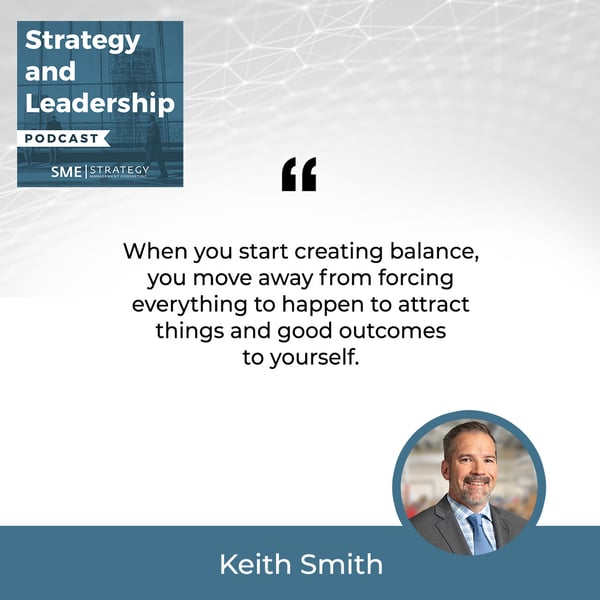
I've never heard, "Overflow your bucket." I've heard the oxygen mask metaphor but I like putting that into place. Out of my personal curiosity, are you a 5:00 AM wake-up guy? Are you a 7:00 AM wake-up guy?
For sleep, I need seven hours but from 10:30 to 5:30, I'm in the office. By 7:30 to 8:00, I've already poured so much into myself that I'm ready to charge. There are a lot of different techniques. I focus on four tenets of energy. There's my physical energy, my mental energy, my emotional energy, and my spiritual energy. If you go to my personal website, KeithSmith.io, it talks a lot about this energy management. That's my personal mission to give back to other entrepreneurs.
I was going to ask how people could connect with you. One thing that I've heard and seen from people is when they're upset with their team or when they have had enough, they retreat and go in because they have to do that energy management but I like the fact that you're like, "When you've got enough to give, there's enough to go around." You're supporting others but you have to support yourself first. That's fantastic. People can connect with you online. Why don't you give us that website address? Is there anything else that you want our audiences to know before we finish off?
If I can be of any help to anybody, shoot a note through my website, KeithSmith.io. I've got a fair amount of blogs out there talking about some of the high-level stuff that we talked about now. You can check out our products and role in the market at www.Vonco.com.
I appreciate that. Thank you, Keith. I appreciate you joining me. It was a fun conversation. I wish you nothing but the best of success in whatever next acquisition you take.
Thank you so much, Anthony. It's great to be with you.
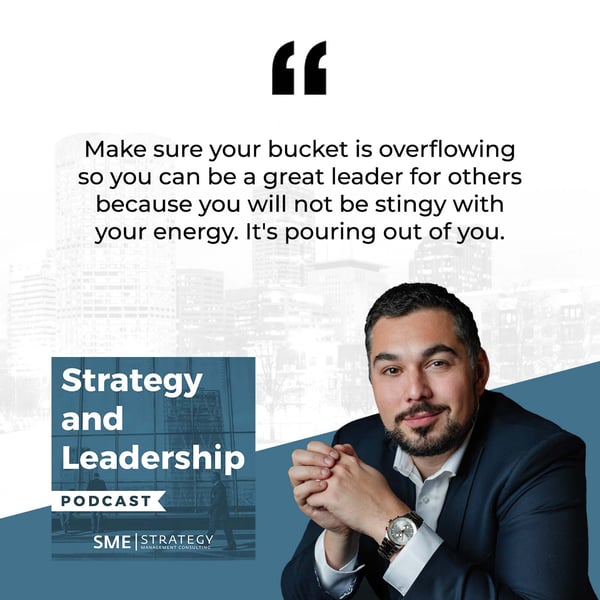
My guest, Keith Smith, is the President and CEO at Vonco Products. Here are two of the cool things that I heard. One is making sure that your bucket is overflowing so that you can be a great leader for others because you're not being stingy with your energy. It's pouring out of you. The other thing that I thought was neat in Keith's journey is the long-term vision and the day-to-day steps. I'm sure if Keith and I chatted for another couple of hours, he would share all of the ways that he messed up in those many years.
Remember as a leader that it goes slowly forward and fast looking backward. When you have a large enough timeline, and you give yourself a little bit of grace, you can accomplish a lot more than you think. That's my invitation to you. Set that intention, give in to yourself, give in to other people, and make some magic happen. Once again, thank you, Keith, for joining me. I appreciate you subscribing, connecting, and reaching out. We will see you next time.
Important Links
About Keith Smith
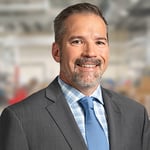
Keith is an accomplished entrepreneur, innovator, investor, blogger, speaker, and motivator; he was most recently recognized as a 2023 Wisconsin Titan 100. The Titan 100 program recognizes Wisconsin’s Top 100 CEO’s & C-level executives


